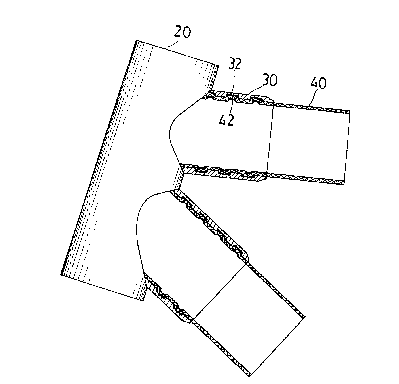Some of the information on this Web page has been provided by external sources. The Government of Canada is not responsible for the accuracy, reliability or currency of the information supplied by external sources. Users wishing to rely upon this information should consult directly with the source of the information. Content provided by external sources is not subject to official languages, privacy and accessibility requirements.
Any discrepancies in the text and image of the Claims and Abstract are due to differing posting times. Text of the Claims and Abstract are posted:
| (12) Patent Application: | (11) CA 2075873 |
|---|---|
| (54) English Title: | BICYCLE FRAME TUBE CONNECTING DEVICE |
| (54) French Title: | DISPOSITIF DE RACCORDEMENT DES TUBES DU CADRE D'UNE BICYCLETTE |
| Status: | Deemed Abandoned and Beyond the Period of Reinstatement - Pending Response to Notice of Disregarded Communication |
| (51) International Patent Classification (IPC): |
|
|---|---|
| (72) Inventors : |
|
| (73) Owners : |
|
| (71) Applicants : | |
| (74) Agent: | KIRBY EADES GALE BAKER |
| (74) Associate agent: | |
| (45) Issued: | |
| (22) Filed Date: | 1992-08-12 |
| (41) Open to Public Inspection: | 1994-02-13 |
| Examination requested: | 1992-08-12 |
| Availability of licence: | N/A |
| Dedicated to the Public: | N/A |
| (25) Language of filing: | English |
| Patent Cooperation Treaty (PCT): | No |
|---|
| (30) Application Priority Data: | None |
|---|
BICYCLE FRAME TUBE CONNECTING STRUCTURE
ABSTRACT OF THE DISCLOSURE
A bicycle frame tube connecting device includes a
frame tube connector having at least one tubular lug, which
has each a plurality of circular recesses spaced from one
another around the respective inside surface, and at least
one frame tube respectively inserted in the at least one
tubular lug and treated through the process of squeezing to
fore a plurality of circular projections respectively
engaging the circular recesses on the respective tubular lug.
A reinforcing tube each may be respectively inserted in the
at least one frame tube, and then treated through the process
of squeezing to form a plurality of circular projections
around the outside surface respectively fit the circular
projections on the respective frame tube.
Note: Claims are shown in the official language in which they were submitted.
Note: Descriptions are shown in the official language in which they were submitted.

2024-08-01:As part of the Next Generation Patents (NGP) transition, the Canadian Patents Database (CPD) now contains a more detailed Event History, which replicates the Event Log of our new back-office solution.
Please note that "Inactive:" events refers to events no longer in use in our new back-office solution.
For a clearer understanding of the status of the application/patent presented on this page, the site Disclaimer , as well as the definitions for Patent , Event History , Maintenance Fee and Payment History should be consulted.
| Description | Date |
|---|---|
| Inactive: IPC from MCD | 2006-03-11 |
| Time Limit for Reversal Expired | 1996-02-12 |
| Application Not Reinstated by Deadline | 1996-02-12 |
| Inactive: Adhoc Request Documented | 1995-08-14 |
| Deemed Abandoned - Failure to Respond to Maintenance Fee Notice | 1995-08-14 |
| Application Published (Open to Public Inspection) | 1994-02-13 |
| All Requirements for Examination Determined Compliant | 1992-08-12 |
| Request for Examination Requirements Determined Compliant | 1992-08-12 |
| Abandonment Date | Reason | Reinstatement Date |
|---|---|---|
| 1995-08-14 |
The last payment was received on
Note : If the full payment has not been received on or before the date indicated, a further fee may be required which may be one of the following
Please refer to the CIPO Patent Fees web page to see all current fee amounts.
| Fee Type | Anniversary Year | Due Date | Paid Date |
|---|---|---|---|
| MF (application, 2nd anniv.) - small | 02 | 1994-08-12 |
Note: Records showing the ownership history in alphabetical order.
| Current Owners on Record |
|---|
| YUNG-YUAN WU |
| YUNG-YUAN WU |
| Past Owners on Record |
|---|
| None |